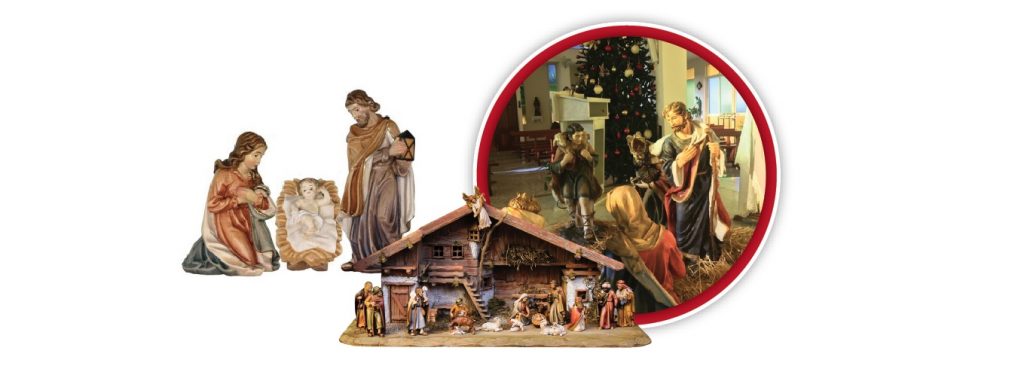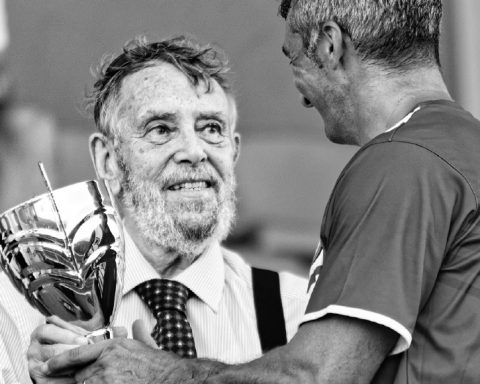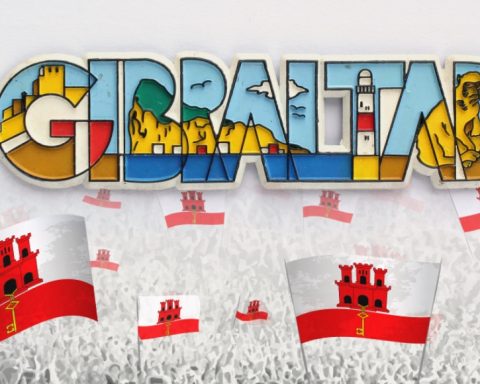The Christian tradition of creating a nativity scene (also called a crib or manger) representing the birth of Jesus has been alive for many years and exists in many cultures as an art form.
This artistic licence gives free rein to imagination and so nowadays there is a thriving industry around the religious figurines and crib decorations in many Christmas markets. I have been to crib shops in Madrid that sell three quarter life-size statues of the Holy family and farm animals like cows, sheep and donkeys to decorate church nativity scenes. The open air Christmas market in Madrid’s Plaza Mayor which I also visit every year has a great range of cribs and decorations in all sizes and price ranges to suit all budgets. At the upper end of the price range one can come across truly beautiful figurines and all the paraphernalia needed to make a spectacular crib surrounded by crushed paper mountains and peopled villages.
In Gibraltar today churches display both a nativity scene and a Christmas tree that keeps both traditions alive and some homes follow that tradition too, although the large scale cribs of seventy years ago when I was a child are a dying art. There is still a local crib competition held annually and in my parish of St Paul’s at Varyl Begg estate, the semi-large scale nativity scene is put up by Ernest Mesilio who also puts up the huge Christmas tree and a bigger format manger in front of the main altar. A few years back we heard how the church was not too happy about the long held artistic representation in manger settings where a bull and a donkey closed ranks to breathe warm air onto the shivering baby Jesus. A clear case of where the age-old artistic embellishments have become even more colourful than the real story of Christ’s birth. The jury is still out on that one and no nativity scene worth its salt would pass on having a bull and donkey inches away from the infant’s head.
My late mother was a dab hand at putting up cribs at our home, which the neighbours and their children would come to see. She had been brought up here by nuns at Gavino’s orphanage and the tradition and methods had been drilled into her. In November she would ask my father to start bringing home brown paper (I also remember charcoal grey paper) so that she would crush them in her hands and fashion them into mountains which would later be capped with sprinklings of flour for realistic snow capped peaks. In the sawdust covered valley floor below the mountains (the plateau sat on a sideboard 1.5 metres long) a little mirror would become the water over which a cork bridge would span across. Little figurines collected and added to over the years would populate the valley.
A few shepherds and their flocks would converge on the manger and their daily progress would be timed (as children we were allowed to handle the figurines) so that by Christmas Eve the manger area was crowded. It would have an overhead angel and a star of Bethlehem and importantly, the crib was the main focus for our singing old Spanish villancicos (traditional religious Christmas carols). There are a number of ‘abstract’ cribs made by such firms as LLadro, Swarovski and others and although their artistic elegance is not disputed, the popular choice of Nativity tableaux remains the humble manger setting with the infant Jesus, Mary and Joseph and two farm animals. An overhead star of Bethlehem usually crowns these tableaux and they will always be displayed indoors in the main lounge on a sideboard. Gone are the days that carols are sung in front of cribs.
Today’s more commercialised Christmas celebrations are centred on colourful wrapped presents displayed under Christmas trees and lots of food, enough to feed a regiment, also displayed and heartily consumed in our family settings. The religious sentiment of the season has been modified into a sort of food festival where you get a present for turning up and you also give presents for the privilege of being invited. Christmas on the Rock is still happily very family-centred and we wouldn’t have it any other way now. That is not to say that the Christmases of old still tick all the boxes for the grandparents of today’s younger generations. Have a great holiday and I hope that father Christmas is generous with you all and we will see you on the other side of the New Year.









